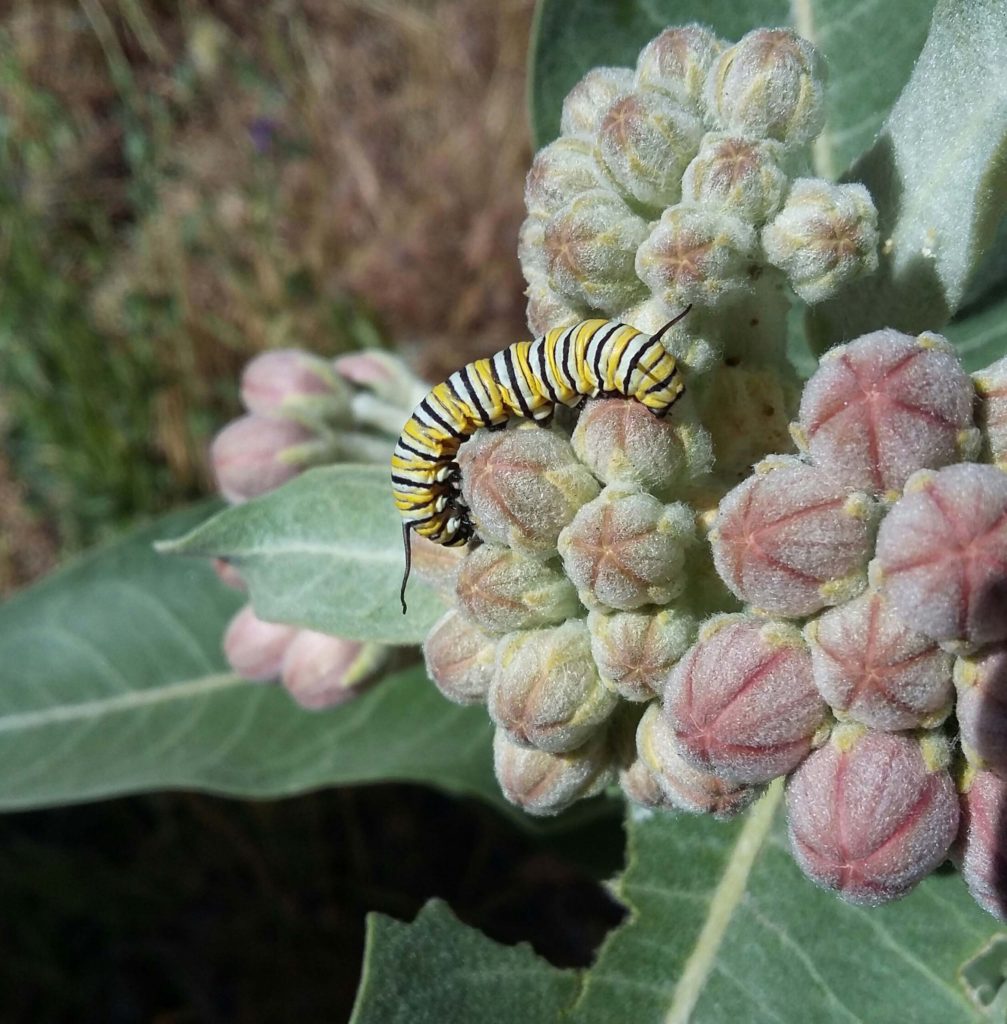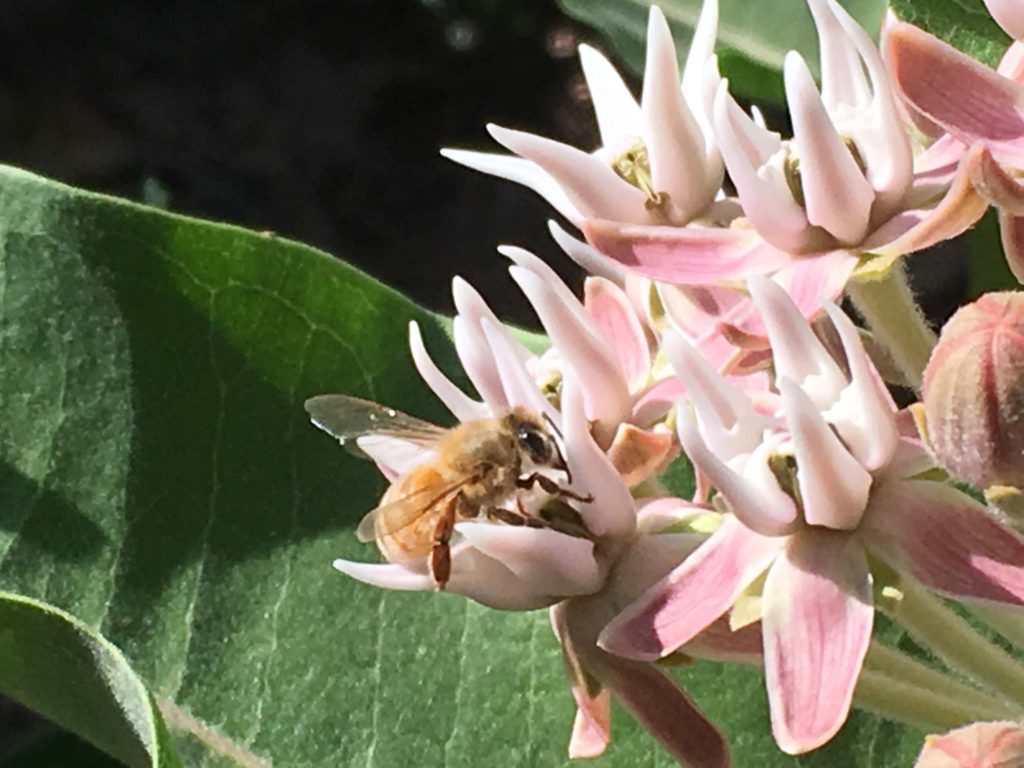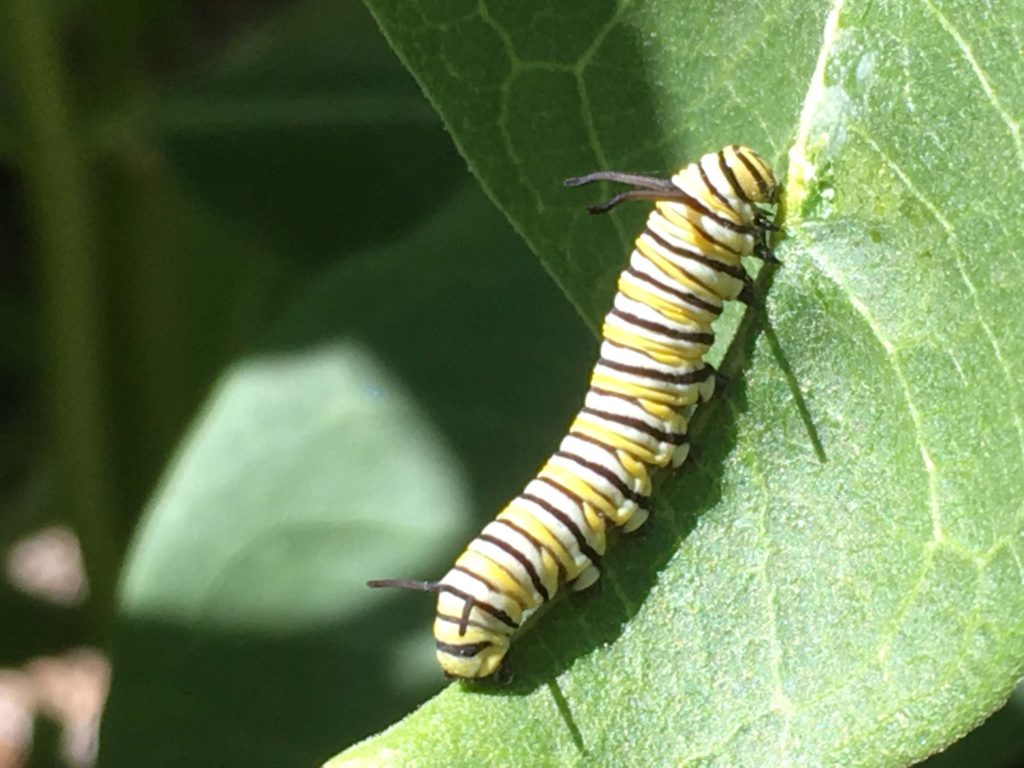
Aptly named, showy milkweed (Asclepias speciosa) puts on a show throughout its life. With the arrival of spring, new growth of wonderfully large 4- to 7-inch long, grayish, fuzzy leaves grow opposite each other on sturdy stalks. These stalks in turn support the clusters (or umbels) of pale pink to purplish complex and fragrant flowers. The plant continues its show with equally large 3- to 5-inch long showy fruit pods, or “follicles.” Its many flat oval seeds with silky plumes are spread by the wind. Growing to about 4 feet tall and wide, this milkweed is very easy to grow in a garden.

Photo by Margaret Widdowson.
This perennial herb prefers medium- to fast-draining soil (but will tolerate clay), and low moisture with two or fewer deep waterings per month during the summer. It prefers bright sun (some part shade may be tolerated) and winters above −5 ºF.
Native milkweeds go dormant in the fall. When their leaves and stems dry out, this is one of several signals to monarchs to migrate to their natural overwintering sites along the central California coast. New leaves will emerge from the roots in spring when the soil has warmed up in April, after a series of warm sunny days.

Young seedlings will need gentle handling when planted in a sunny to mostly sunny location. Use water to settle the soil around the roots, rather than gardening tools or hands, to avoid breaking off the root system. If warm weather is already here, they will need frequent watering for the first two weeks. Then taper off to watering twice per week, then once per week to 10 days.
Watch for drooping leaves that indicate a need for more water. Since the root ball is not large at the beginning, a moderate amount of water will be enough. Water in the cool morning hours, or if you notice the plant drooping on a hot afternoon. Once established, showy milkweed is among the most drought-tolerant plants.
In about two years, showy milkweed will produce large leaves that provide plentiful food for monarch caterpillars. Showy milkweed blooms have a delicious sweet scent that draws monarch females to feed from the flowers and lay their eggs on the underside of the milkweed leaves. And monarchs can also find milkweed before they bloom. There are still some monarch mysteries!

Photo by Mary Ann McCrary.
Our depleted West Coast population of monarch butterflies has adapted to all of our native milkweeds. Three other native milkweed species include: narrow-leaved (Asclepias fascicularis), kotolo (A. eriocarpa), and purple milkweed (A. cordifolia).
Our ecological web is healthiest and strongest when supporting and supported by native plants and insects that evolved together. –Doug Tallamy
While famous as the monarch butterfly’s preference for egg laying, birds and other insects are also attracted to milkweed. Plant it with sunflowers and mint family plants for nectaring and for places that caterpillars can make their chrysalises. It is also recommended that it is planted away from walkways where the life it supports may be less disturbed.
We highly recommend the Bringing Back the Natives Garden Tour presentation by Bridgeview Pollinator Garden, Oakland, on controversial aphids and milkweed: Life and Death on Milkweed. This eye-opening YouTube with excellent photography was created by May Chen and narrated by Clytia Curley. ~The Horticulture Team
